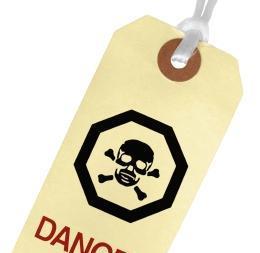When cases of bird flu were widespread in 2005 and 2006, the risk of a worldwide human influenza pandemic was taken as a serious threat. While the threat has not receded, European companies may have let down their guard, says Graham Buck
In this age of ephemera, risk priorities can go out of vogue as quickly as celebrities and fashions. This appears to be the case with the threat of a pandemic influenza outbreak. Only two years ago ‘bird flu’ got the full attention of the media. They subsequently moved on to other stories, although the threat has neither been removed nor diminished.
In the summer of 2005, scattered outbreaks of H5N1 avian influenza in migratory waterfowl, domestic poultry and humans in Asia triggered alarming reports. Following outbreaks of anthrax in the US in late 2001 and the Severe Acute Respiratory Syndrome (SARS) cases of 2003, many of these reports claimed the world stood on the verge of a major human epidemic as H5N1 was highly pathogenic and there would be many cases of it spreading to the general population.
The pandemic threat made headlines in the UK when dead birds were found there and H5N1 was confirmed as the source. The last such well-publicised event was in January 2007, when infection was detected at Bernard Matthews’ turkey farms in Suffolk. It triggered a mass cull of birds, and the area temporarily became an exclusion zone. Yet, as the World Organisation for Animal Health records on its website www.oie.int, there have been subsequent cases of H5N1 in the UK during 2007 and 2008 that have attracted little attention.
The topic briefly returned to the news this summer with the issue of two reports. The first, published by the UK House of Lords Intergovernmental Organisations Committee, suggested that it was ‘inevitable’ that the world would suffer another influenza pandemic on a scale last experienced 40 years ago. The authors predicted that there would be between two million and 50 million deaths worldwide, with the UK tally estimated at up to 750,000 (the figure was widely and erroneously reported as 75,000).
The report criticised the structure of the World Health Organisation, described as ‘dysfunctional’, and its ability to coordinate an effective response. It agreed with the Government’s own observation that international activity to control disease is poorly coordinated, with too many organisations duplicating each other’s efforts. And it backed calls for improved warning systems in Third World countries to identify and contain local outbreaks before trade and tourism spread viruses elsewhere.
On a more positive note, the authors noted that global surveillance and response systems had been significantly improved over the past 10 years, and committee chairman Lord Soley said his team had been impressed by an increase in resources and commitment devoted to disease control.
The other report, produced by the London School of Hygiene and Tropical Medicine, focused on Europe’s business continuity planning for a potential pandemic. The authors, Dr Richard Coker, the School’s reader in public health, and colleagues Sandra Mounier-Jack and Alexandra Conseil, found that the level of advice offered to businesses varied significantly from country to country, with some significant gaps in the information available. This was largely due to the greatest efforts being devoted to preparing public health systems, at the expense of the business sector.
The authors surveyed 30 European governments and found that only eight provided significant levels of advice on preparing for a pandemic, while more than one third offered no advice at all.
Many countries had not seriously addressed the implications of significant numbers of workers taking time off for sick leave or to care for family and relatives, despite estimates that between 15% and 50% of employees would need five to 14 extra working days off for this reason. Only 10 countries provided planning to support human resources departments, although high rates of absenteeism would severely test the ability of organisations to maintain business as usual.
In addition, much of the advice available was limited to guidelines prepared by private consultancies, whose fees were beyond the resources of smaller and medium-sized enterprises.
‘Companies paying for specialist advice are often loath to share it with others,’ says Dr Coker. ‘But there’s no excuse for governments not doing so. Yet many countries aren’t providing any advice whatsoever to their business sectors, while there are weaknesses in the guidelines offered by those that are. Certainly the message going out has many incoherencies and inconsistencies.’
He agrees that the WHO does not function perfectly, despite some excellent units, partly due to rival organisations with less accountability encroaching on its territory. He also believes its structure of six autonomous regional offices keeps politicians happy, but adds little value in an age of swift international communications, while hampering direct accountability to Geneva.
While the LSHTM report evaluated 30 European countries, based on the quality of their guidance on pandemic risk, WHO has found from experience that its member countries react badly to comparison tables, adds Dr Coker. Yet he argues that they have much value in highlighting best practice, attracting the attention of both policymakers and the media, and putting pressure on the lowest rated to improve their performance.
On a more positive note, Dr Coker is hopeful that under director general Margaret Chan, WHO’s structure and performance will receive much-needed reform. And since experts working on pandemic influenza vaccine development met in Geneva in February 2007, there have been encouraging reports on the development progress and supply of vaccines.
Lip service
While European organisations with a global presence are generally well prepared for a possible pandemic, they tend to be the exception rather than the rule, suggests Tim Cracknell, a partner of the global risks division of Jardine Lloyd Thompson. In many cases, pandemic risk receives lip service, but not a lot of effective work is actually going on, and while some businesses have attempted to grasp the issue, their planning could well prove inadequate.
‘My perception is that the level of risk communication is appalling,’ he observes. ‘The medical advice is that a pandemic is a case of ‘when’ and not ‘if’. This is repeated by the media, which hypes up the issue and then just as promptly forgets about it.’
“In many cases, pandemic risk receives lip service, but not a lot of effective work is actually going on.
Even companies in the financial services sector that have done more than most to prepare, such as HSBC, could find some of their antivirals and other resources commandeered by governments he suggests. This is one of several potential scenarios that have not been properly communicated.
A further problem is the element of ‘pandemic fatigue’ that has set in, suggests Dr Coker. The threat is just as great as it was two or three years ago, yet the issue has slipped down the risk agenda. In the interim, the economic downturn has led to companies prioritising. Resources devoted to combating a pandemic have often suffered.
But Professor Lindsey Davies, the Department of Health for England’s national director of pandemic influenza preparedness, offers reassurance by confirming that the Cabinet Office has set up a business advisory group on civil protection. This is to widen its engagement with the business sector to ensure effective business continuity planning for pandemic influenza and other risks.
‘They maintain regular, close contact with the private sector to guide and encourage them in their planning and will work to ensure that pandemic flu planning remains a high priority regardless of changes in the economic climate,’ she adds.
As part of its ongoing work to provide appropriate advice, the Cabinet Office has produced a pandemic flu checklist for businesses, addressing the specific challenge to business continuity. This document is available from http://www.ukresilience.gov.uk/ pandemicflu/guidance/business.aspx.
Crying wolf
Meanwhile the Federation of Risk Management Associations (FERMA) is getting feedback from members that risk managers are struggling to retain top management’s interest in the topic, reports Franck Baron, FERMA’s vice president and also VP for risk management and insurance at Swiss group Firmenich. ‘We are regarded much as the boy who cried wolf,’ he observes. Indeed, of the workshops offered at FERMA’s Risk Management Forum in Geneva last October, the session on pandemic flu risk was among the less well attended.
But this indifference could spell trouble when the next pandemic does arrive. Dr Coker says that companies have grown significantly more dependent on one another over the past decade. This trend was noted and perceptively explored by Thomas Friedman in his 2005 book The World Is Flat.
Nonetheless, with pandemics no longer heading the risk agenda, many local authorities and companies across Europe may decide against renewing stocks of the medication oseltamivir phosphate; better known under brand name Tamiflu. Demand for Tamiflu was heavy when the bird flu scare peaked in 2005-6, and its shelf life is typically no more than five years.
Baron’s own view is that Tamiflu is more of a placebo than a true solution, although his own company purchased it. ‘Ordering it showed our employees that we took the threat seriously, but its actual effectiveness will be no more than limited at best,’ he suggests. Added to which, inoculated workers may still be forced to stay at home if family members or relatives fall sick.
Nonetheless, employees may ask what their company’s policy is. Nestlé is reviewing its internal guidelines on Tamiflu procurement and expiration, according to group head of risk management, Marc Schaedeli, and also wants to ensure that expired supplies are disposed of carefully.
Air services specialist, gategroup, parent of the world’s largest independent airline caterer Gate Gourmet, invested CHF2m (£1m) in stocks of Tamiflu, hospital protective masks and other protection material such as disinfectants and temporal thermometers. The group also regards the antiviral as ‘an important line of defence’, says group director of risk and insurance Christian Leder. He adds that Roche recently offered a useful facility by enabling companies to reserve future supplies of Tamiflu in return for a modest fee.
As many companies have recently gone through the process of identifying their key workers who are crucial to maintaining operations, they may be the privileged group to receive a ‘Tamiflu top up’ in two or three years’ time.
A deafening silence
Risk managers of companies with pan-European operations generally feel that, while the situation in western Europe is far from perfect, of greater concern is an apparent lack of response from much of central and Eastern Europe (with Poland cited as an honourable exception). They report that little is heard from most governments in the region. If action is being taken it is not being communicated.
France’s government and Switzerland’s Federal Council are among those that score fairly well in offering assistance to business on pandemic preparation, says Nestlé’s Schaedeli, who believes it has particularly helped small to medium sized enterprises with limited resources for developing a response.
Nestlé’s own risk evaluation was helped by the SARS episode, when some of its units were located close to the outbreaks. The group conducted its first pandemic assessment in 2004 and drew up a set of guidelines the next year. These were subsequently expanded to include input from the group’s worldwide operations, which reviewed the measures taken by local authorities and health bodies to identify any gaps.
“For multinationals, the task of preparing a contingency plan is particularly complex.
With poultry a main ingredient in some products, Nestlé also assessed the aspect of food safety that might be impacted in the event of an outbreak. From this review it developed contingency plans for sourcing from alternative producers should any of its main suppliers be unable to deliver.
Gate Gourmet, which produces about 80,000 meals daily for Heathrow alone, also learned lessons from SARS, says Leder. During the bird flu scare, poultry briefly came off the menu, to be replaced by pasta. In addition to local monitoring, the group uses the services of iJET’s World Pandemic Monitor (www.worldpandemicmonitor.com) to monitor the global situation and receive early warning of outbreaks. ‘WPM publicises its business contingency plan and produces webcasts on the current risk level and response guidelines,’ says Leder. ‘The aim is to maintain awareness, but without generating panic or fear.’
Gategroup maintains close contact with the WHO and CDC (Centres for Disease Control and Prevention), which provides reports on the relative state of readiness in individual European countries. Given the absence of a pan-European governmental strategy for responding to a pandemic, the group’s contingency plan is kept ‘as flexible as possible’ and is backed by substantial investment.
He confirms that the areas of weakness identified by Dr Coker’s team tallies with his own group’s findings. ‘If you are a multinational, the onus is on human resources management to decide whether global guidelines are most appropriate, or if they should be developed on a local basis.
‘The report is also correct in stating that HR needs to be involved in drawing up a contingency plan, and that companies may need to prioritise the areas they work on strengthening.’
The weakest links
For multinationals, the task of preparing a contingency plan is particularly complex. For example, steel giant ArcelorMittal operates in 60 countries worldwide and comprises five main business sectors. Its asset risk manager, Adrian Clements, says the group has to not only assess the probability of an outbreak in one single plant but also that of a massive loss of control that would trigger multiple outages and shut several plants.
‘Companies need to quickly identify any outbreak and close an affected site before key operators are affected. Basically, you’ll get a brief window of opportunity in which to act. The question is, will your managers back your decision to switch off production in time?’
Clements adds that it is easy to overlook the potential for disruption outside the group. A robust internal contingency plan may ensure the company’s production is maintained, but a pandemic extending to transportation systems could mean that it is unable to deliver to customers and supply chains fail.
Add to this the limited scope for ensuring that your supplier is equally prepared. ‘When negotiating a contract with a new supplier, quality, availability and price is always the major issue for a company,’ he observes. ‘Frankly, it’s unlikely that their contingency plans to cope with a pandemic will even be asked about.’
However, a multinational does at least enjoy a greater degree of flexibility than smaller companies. Sourcing raw materials can be switched to an alternative supplier, or if necessary even to a different continent.
Italy’s Prysinion, which produces cables, is another multinational with a presence in 34 countries and 57 production plants. Group risk manager Alessandro De Felice says that much of the group’s business contingency planning was devised earlier this decade, after two serious earthquakes in Turkey during 1999 destroyed a plant and left many workers homeless.
He adds that Prysinion’s industry sector is a protected one, requiring companies to have operations in each country that it sells in, so customers are local rather than overseas. ‘Our particular business model shows a low level of interdependency between our various locations around the world, so a pandemic in one country won’t have a serious knock-on effect in others.
‘But we do depend on local suppliers and on maintaining supplies of our chief raw materials, which are copper, aluminium and plastic. So we carry out general overall assessments of all supply chain risks, rather than confining it to any one risk.’
Hugh Leighton, risk consultant director for Aon Global Risk Control agrees that business continuity planning may not be a definitive solution, but meeting the guidelines of BS12599 represents ‘a positive challenge’ for most companies – and is probably the most robust defence that can be developed.
‘All you can do is to have processes and procedures in place that allow you to react dynamically – and that also buys you time.’
Professor Davies at the Department of Health sums the matter up. ‘It is really important that every business, however small, pays attention to hygiene now and to getting business continuity plans in place. It is worth adding, that the UK will have the FluLine (a public telephone line to use for health assessment if ill) in place, and antivirals bought by the Government for everyone who has flu symptoms.
‘The assumed worse case scenario is 50% of the population, so there should be less need for employers to provide the drugs.’
Postscript
Graham Buck is a freelance writer


















No comments yet